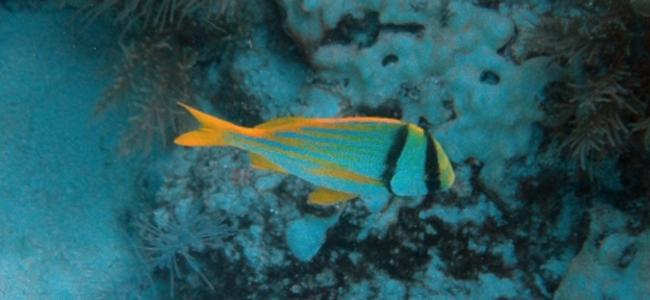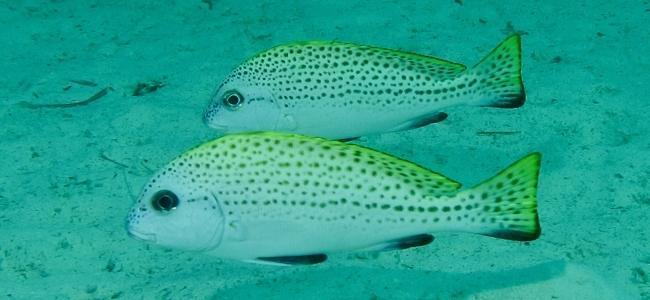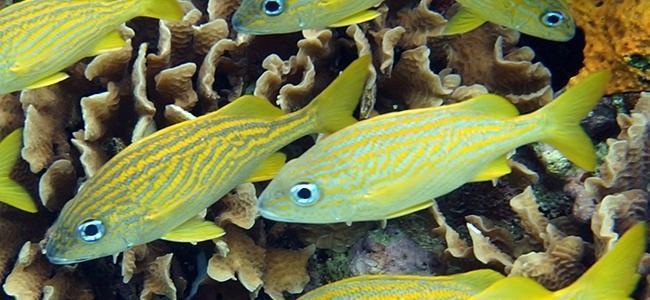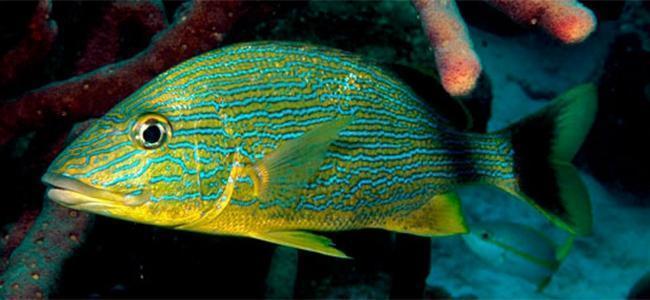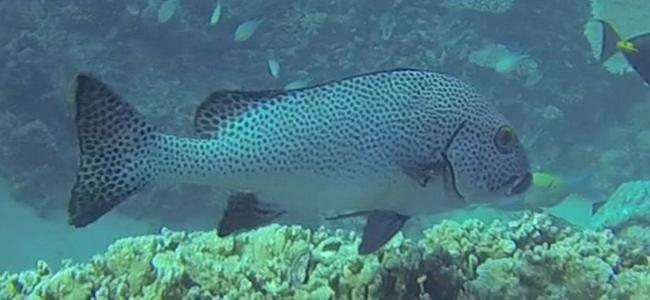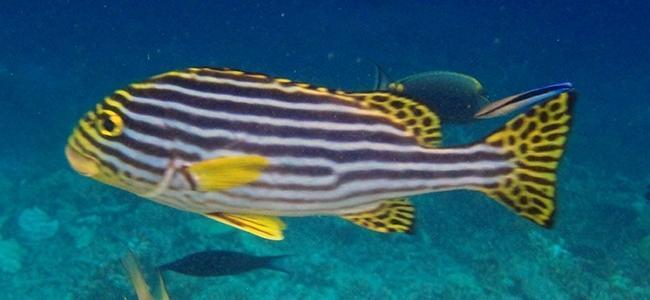Grunts (Haemulidae) are a family of mainly marine or brackish water fish (rarely in fresh water), which belong to the Perciformes. They owe their name to the sound that these fish produce with the friction of their teeth. They are usually found in shallow waters near the shore of almost all tropical and subtropical seas. Juvenile specimens are usually present in shallower waters than adult specimens.
The body of the Grunts is elongated, laterally compressed and usually up to 75 cm long. The profile of their head is markedly convex in most species. With a small to medium sized mouth, they generally have thick lips. In the mouth they have conical teeth, located in a narrow band in each of the jaws. On their chin they have two obvious pores. Their operculum is generally provided with a spine. In many species, the adult stages have very distinctive coloration patterns, however, many juveniles share a similar coloration pattern, consisting of a dark dorsolateral area with bands in the middle of the body and a spot in the caudal area.
The fins present in Grunts species usually have spiny rays. For example, the dorsal fin is unique and continuous, consisting of 9-14 spines followed by 11-26 soft radii. The anal fin has 3 spines and 6-18 spokes. The pectoral fins are moderately long. Pelvic fins located below the base of the pectoral fins and with 1 spine and 5 soft spokes. Anal fin with 3 strong spines (the second spine is the most prominent) followed by 6-13 soft spokes. Caudal fin with a shape between emarginated and forked.
Most of the Grunts take refuge on coral shelves during the day, and later move at night in search of food, among which we find mainly benthic invertebrates, and in particular, Crustaceans, Annelids and Echinoderms; although some small species feed on plankton. The grunt family is composed of 133 species grouped into 2 subfamilies and 19 genera.
